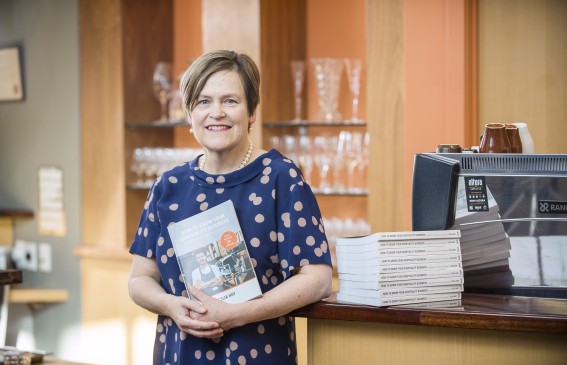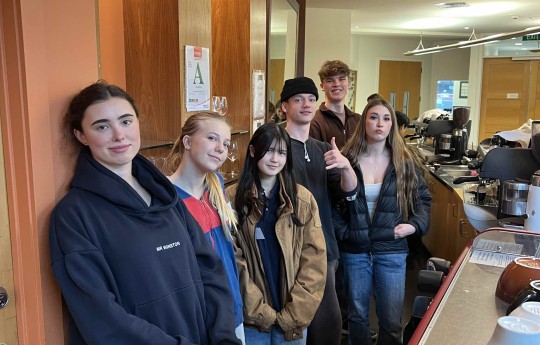Cape Town Excursion
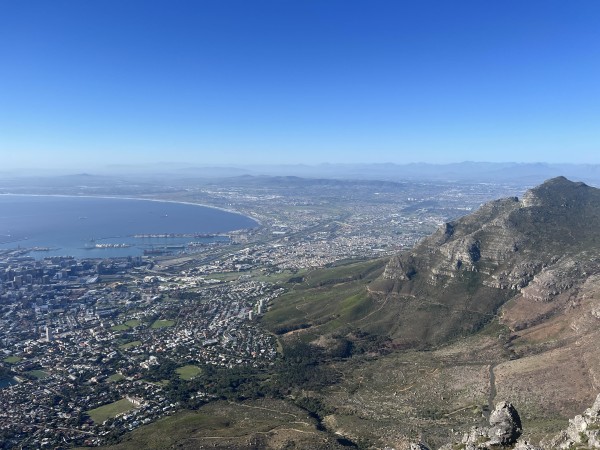
View looking down from Table Mountain to Cape Town.
South Africa, and Cape Town in particular, have old connections with New Zealand primarily from the colonial period of the British Commonwealth, where ships would stop for water and food supplies on route to New Zealand. Later, on the rugby field. And, today, at the New Zealand School of Food and Wine, we have a steady stream of first generation South African students and we teach about South African wine in our WSET Wine and Spirit Trust programmes.

ASI General Assembly Group on Table Mountain
When I was invited to attend the Association of Sommeliers (ASI) general assembly in Cape Town, I knew this would provide a unique opportunity to visit their wine regions and learn more about this country.
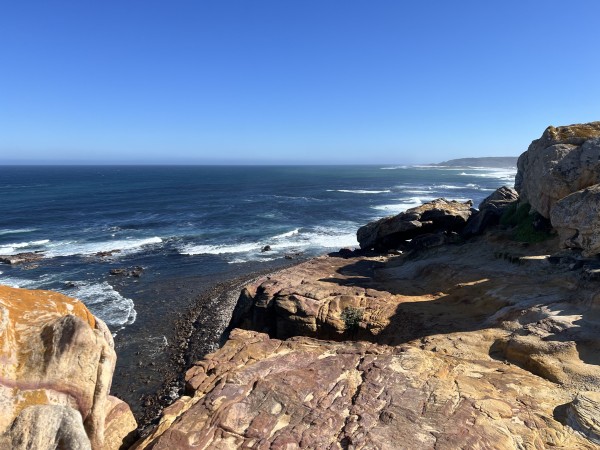
Looking north from Cape of Good Hope.
A trip to Cape Town should include a trip south along the Cape Peninsula to the Cape of Good Hope which are both part of the 25,000 hectare Table Mountain National Park. Driving down the Peninsula is a 6-7 hour round-trip and there are many helpful guides and drivers that can pick you up from your hotel. At the Cape, I was thrilled to climb up a rough track, on a pristine autumn day, and look north and west to the Atlantic and east to the bottom of the African continent at Cape Agulhas where the Atlantic Ocean meets the Indian Ocean.

Fynbos (Fine+Bush) is the distinctive vegetation that grows extensively in the Western Cape on its nutrient poor soils and includes proteas and ericas which are widely planted in New Zealand.

On the Cape Peninsula, there are over 1084 plant species and it ranks among the 'hotspots' of floral diversity in the world.
Kirstenbosch
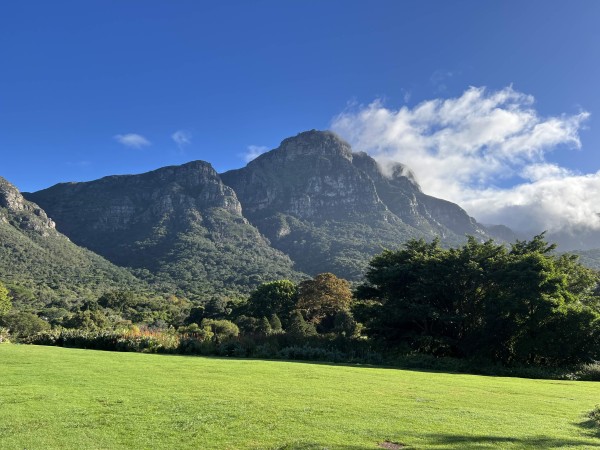
Kirstenbosch Botanical Gardens, flanked by Table Mountain.
The Kirstenbosch National Botantical Garden is located on the Cape Peninsula and around 30 minutes drive from Cape Town CBD.
Kirstenbosch dates from the early Dutch settlement in the 1650s when land was annexed by the Dutch East India Company. To prevent the local tribes from raiding their livestock, Jan van Riebeeck, founder of the Cape Colony, created a wooden fence, fortified with a hedge of indigenous wild almond trees (Brabejum stellatifolium), a member of the protea family.
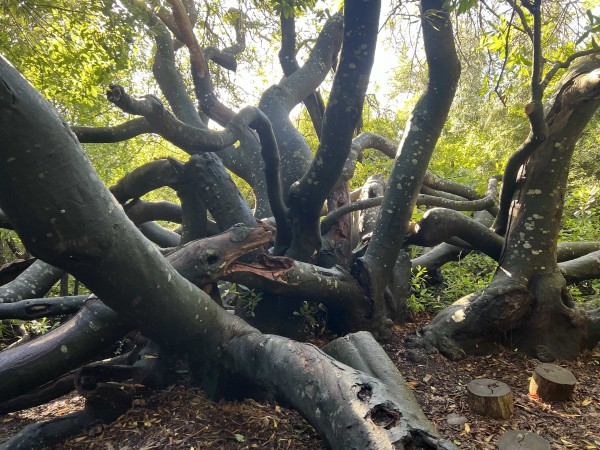
Wild almond trees, remnants of the van Riebeeck hedge in Kirstenbosch.
The wild almond, not to be confused with the almond nut tree Prunus amygdalus, is related to the Australian genus of Macadamia nuts. Wild almond nuts contain cyanide and are poisonous unless specially treated by soaking and roasting, a technique discovered by the Khoisan people who used to eat them. Read more here about Kirstenbosch.

During the Rhodes era, the Camphor Avenue trees were planted.
In 1895, Cecil John Rhodes (1853–1902), who we know as the diamond mining magnate and founder of De Beers, name-sake of Zimbabwe (formally Rhodesia) and benefactor of the Rhodes Scholarship, purchased Kirstenbosch. On his death, Rhodes bequeathed Kirstenbosch to the government and in 1913, it became the first national botanical garden in South Africa.
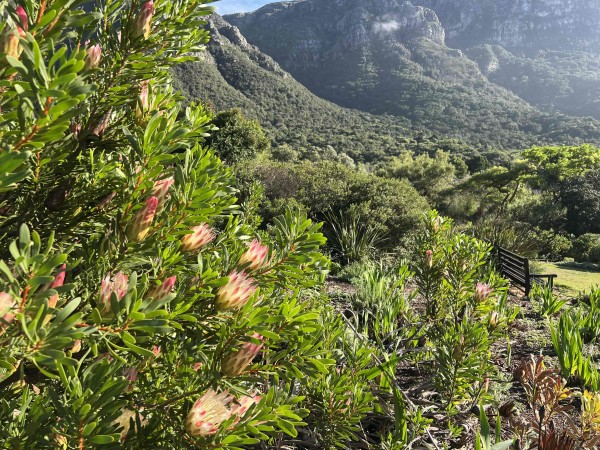
Proteas at Kirstenbosch
Today, Kirstenbosch includes the Botanical Society Conservatory which exhibits and grows plants from a number of different regions. Outdoors, the focus is on plants native to the Cape region including a spectacular collections of proteas, aloes and Strelitzia reginae, Bird of Paradise, named by Sir Joseph Banks to honour Queen Charlotte Mecklenburg-Strelitz, who in New Zealand we know for the name of the magnificent Queen Charlotte Sound in Marlborough.
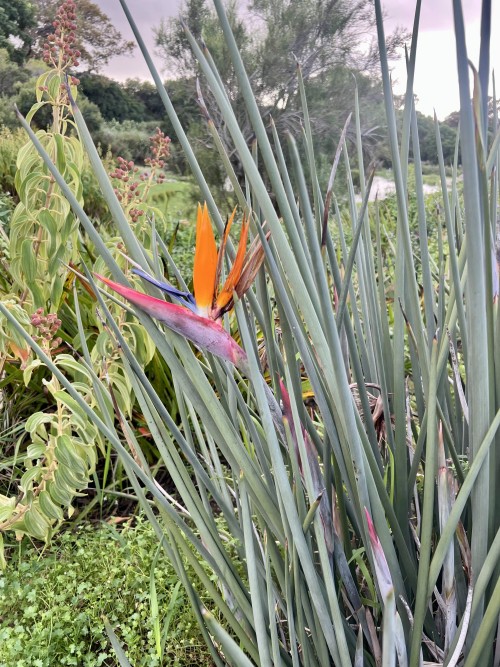
Strelitzia reginae - Bird of Paradise is native to the Western Cape.
Yellowwood tree
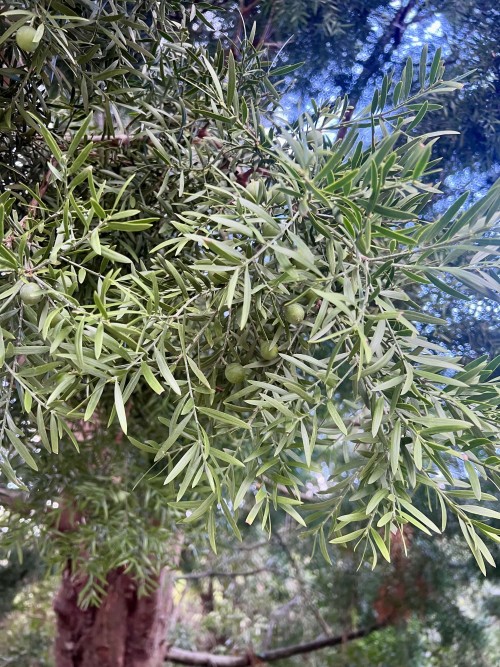
The renowned yellowwood tree Podocarpus latifolius is the national tree of South Africa. With this tree, I knew what to search for, as it is from the same family as our noble trees Totara, Matai and Kahikatea.

The Yellowwood grows slowly up to 30 metres, lasts for centuries and produces wood of exceptional quality, just like the Totara and Matai trees. And, it has also suffered from deforestation with few mature trees left standing.
Constantia
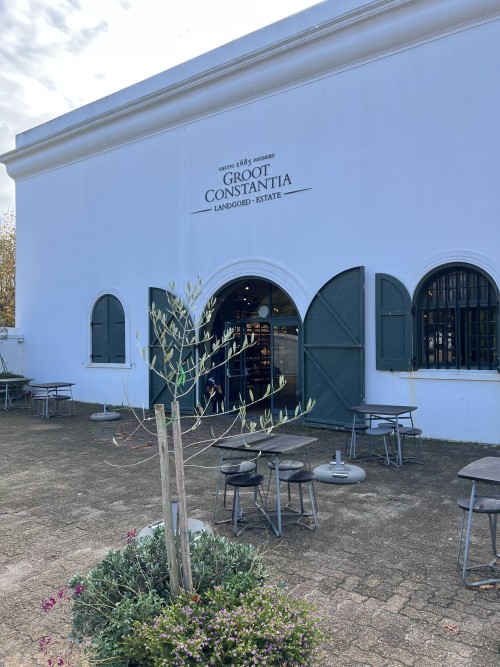
Not far from Kirstenbosch, you can find the wine estates of Groot Constantia and Klein Constantia which were founded in 1685 by the Governor Simon Van der Stel, who was a son of an official in the Dutch East India Company (VOC) based in Batavia (Jakarta) and his mother of was of mixed race (Malay or Indian) whose own mother was a freed slave. Van der Stel was the first mixed race governor of South Africa. Stellenbosch (founded 1679) is named after him, along with Simonsberg mountain and Simon's Town on the Cape Peninsula.
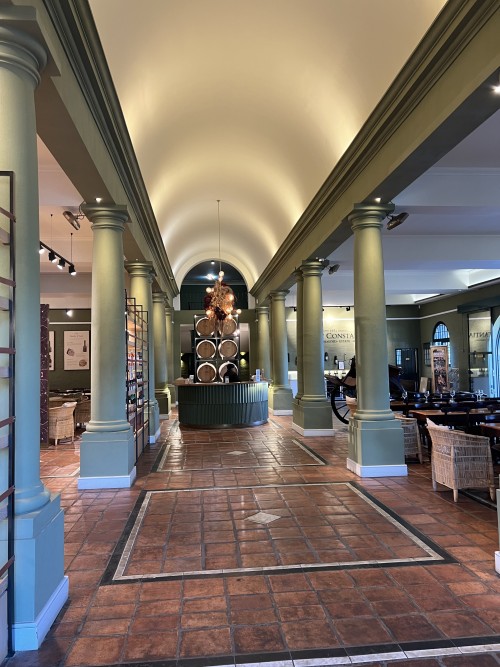
Tasting Room of Groot Constantia
Grapes were grown and made into wine then shipped to other Dutch Colonies and back to Europe growing the international reputation of Cape wines from early colonial period. In 1685, Louis XIV revoked the Edict of Nantes, thereby banning Protestantism in France which resulted 150 Huguenots families, fleeing France and ultimately settling in Franschoek (French Corner). They also brought winemaking skills to the Western Cape and their legacy remains in the celebrated wine regions of Franschoek and Stellenbosch today.
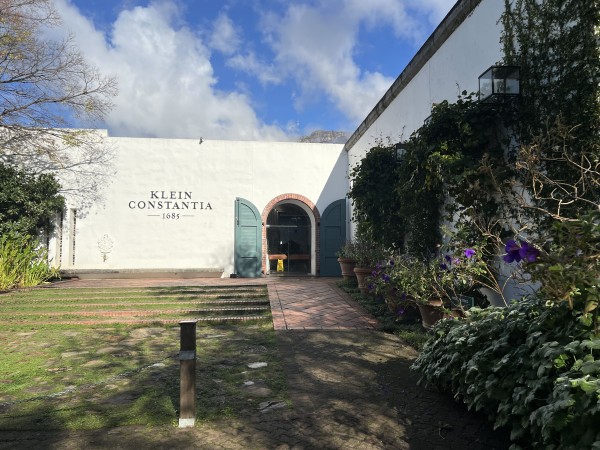
By 1709, there were 70,000 vines with the estate produced 5,630 litres of wine. Upon the death of Van der Stel in 1712, the estate was auctioned into three parts and over the centuries has had many owners. Klein Constantia, then renamed Hoop op Constantia, was in 1718 owned by the widow Elsje van Hoff, the daughter of a woman born into slavery who then married Johannes Colijn, whose mother was a black woman, freed from slavery as a child. By 1736, Colijn declared 50,000 vines planted at Hoop, tended by 30 male slaves. Colijn is credited with putting Constantia wine on the international map in the 1720s.
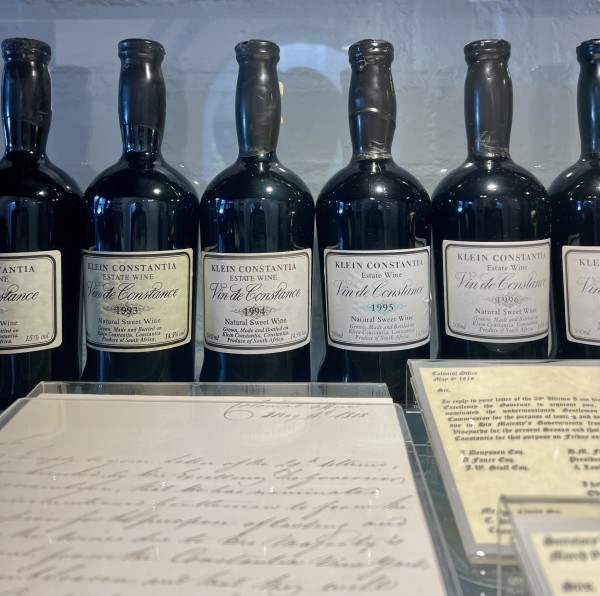
Vin de Constance made the Cape wines famous. Colijn’s descendants continued to produce their sought-after Constantia wines at Hoop op Constantia until the late 1850s. Read more about this fascinating story here.
The flagship wine, Vin de Constance, is made from Muscat de Frontignan. Production ceased around 1880s and was resumed only in 1990. The wine is sweet made from grapes left to hang and ripen in the warm autumn sun. It often has a residual sugar level over 170g per litre and is high in alcohol up to 14.0%. Vin de Constance can age for decades. Read more here.
Celia Hay, June 2025
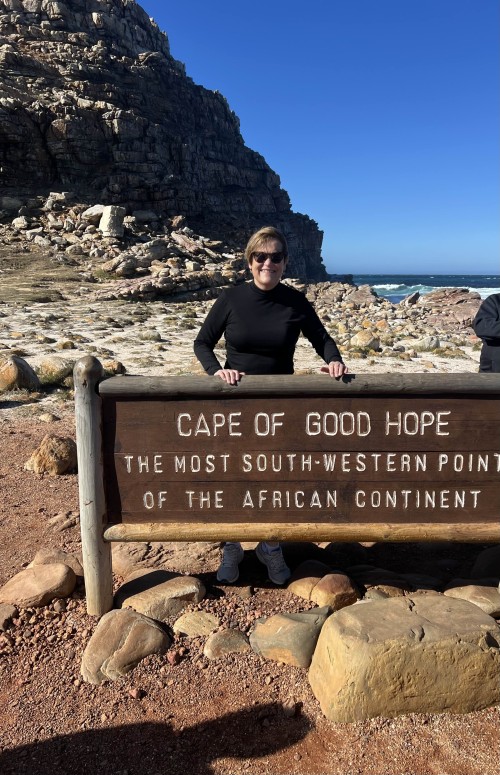
Celia Hay at Cape of Good Hope.

